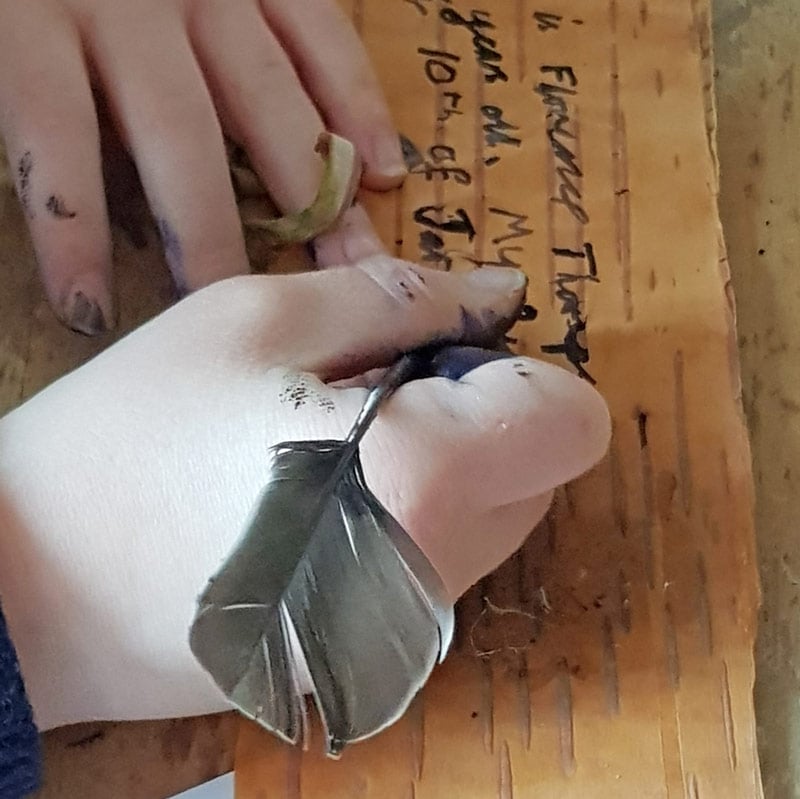 This post includes affliate links, read here how these work.
This post includes affliate links, read here how these work.
I love it when things just happen.
Without a grand plan.
Or lots of faff and fuss.
And this weekend it was these awsomely lovely silver birch scrolls.
We'd been up at the crack of dawn with everyone else.
To make the most of the rapidly thawing snow.
(Us Londoners really do have to make the most of it, we get so little!)
But by lunchtime it was just about gone.
And soggy and wet.
So we were back home hanging out in the kitchen.
Which was when the silver birch scrolls happened.
We'd found this gorgeous piece of fallen silver birch bark a few weeks back when out wandering with grandma and grandpa.
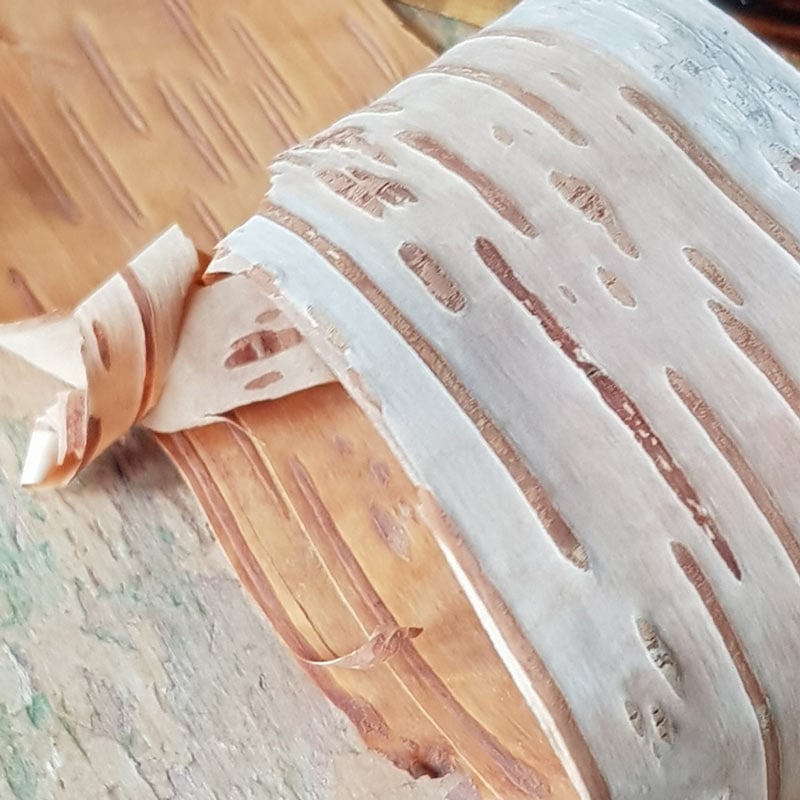
And brought it home just because it was sooo beautiful.
And wondered at the time why the birch sheds its bark.
And now we wondered if we could write on it.
And as a boring biro seemed unworthy of it.
And school fountain pen a bit risky.
We made a rough quill by sharpening an old feather with my little pocket knife.
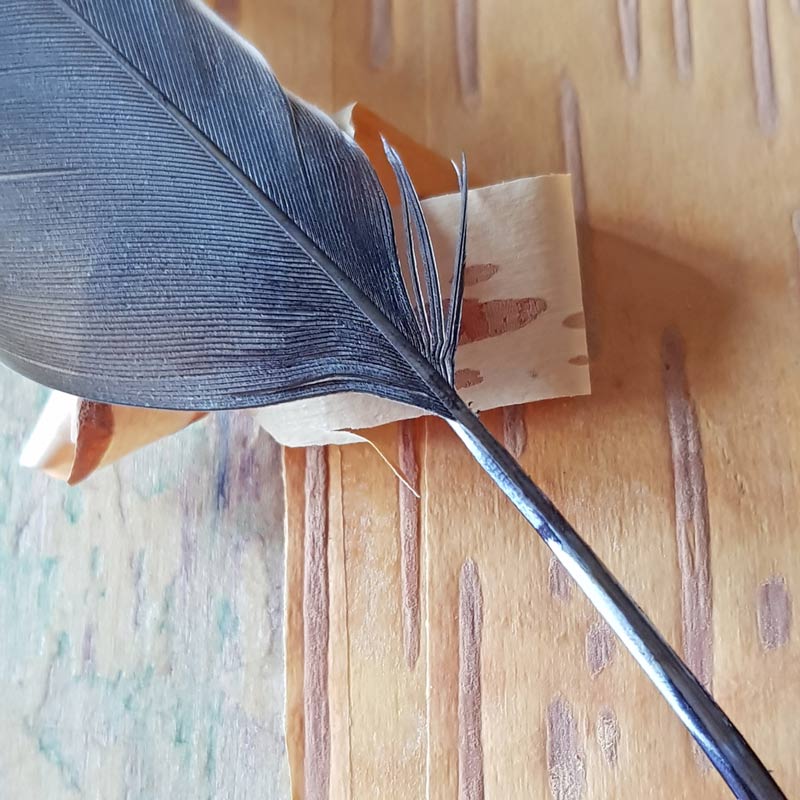
And in the absence of an ink pot cut the top off an old cartridge.
And dipped our feather quill in.
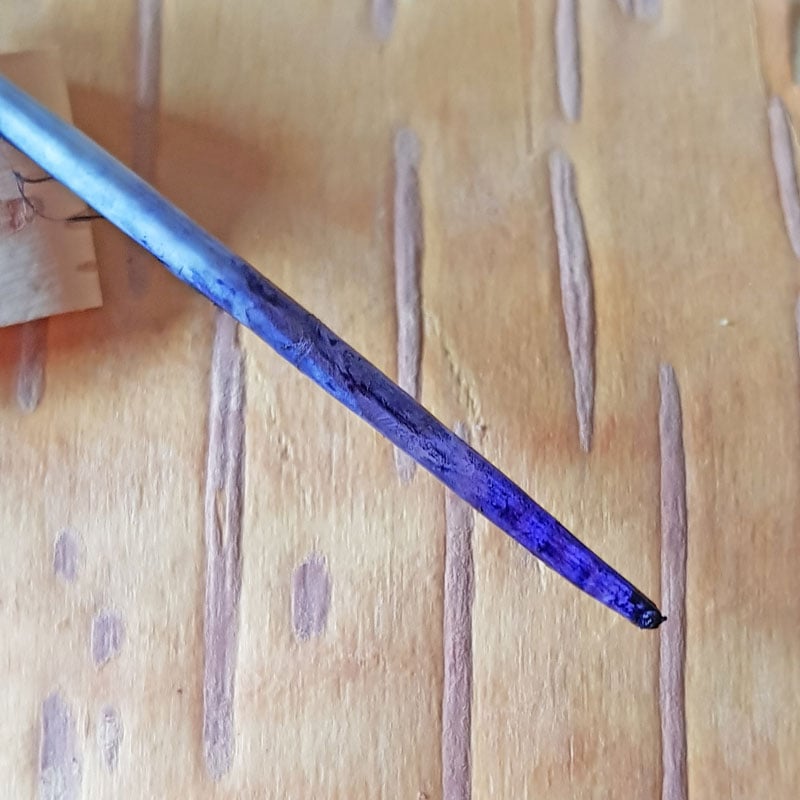
Then wrote away.
And it was perfect.
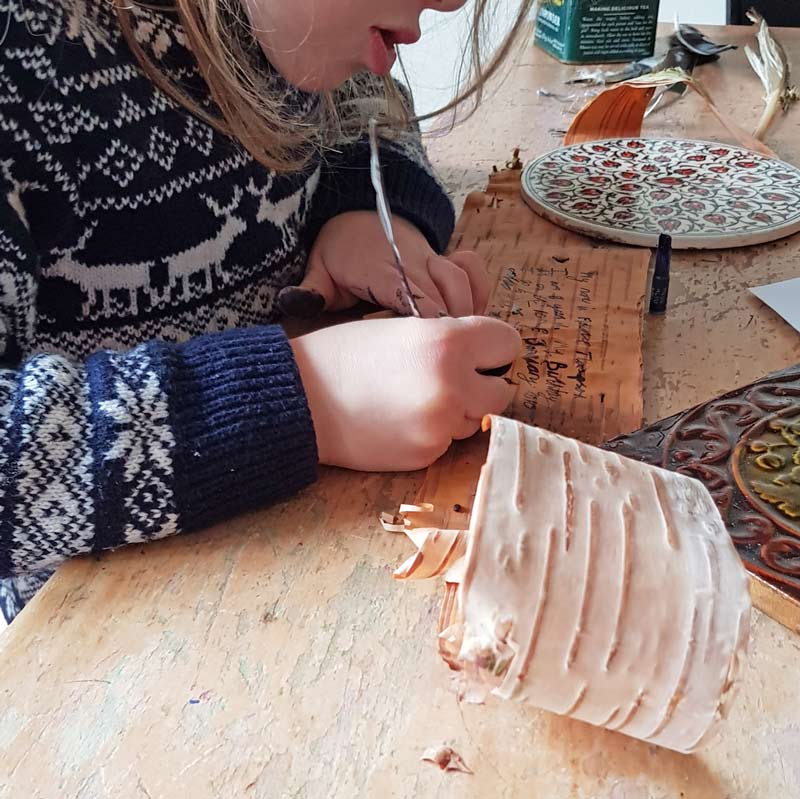
Well OK ... feather quills when you're 8 are pretty messy.
You do have to keep dipping.
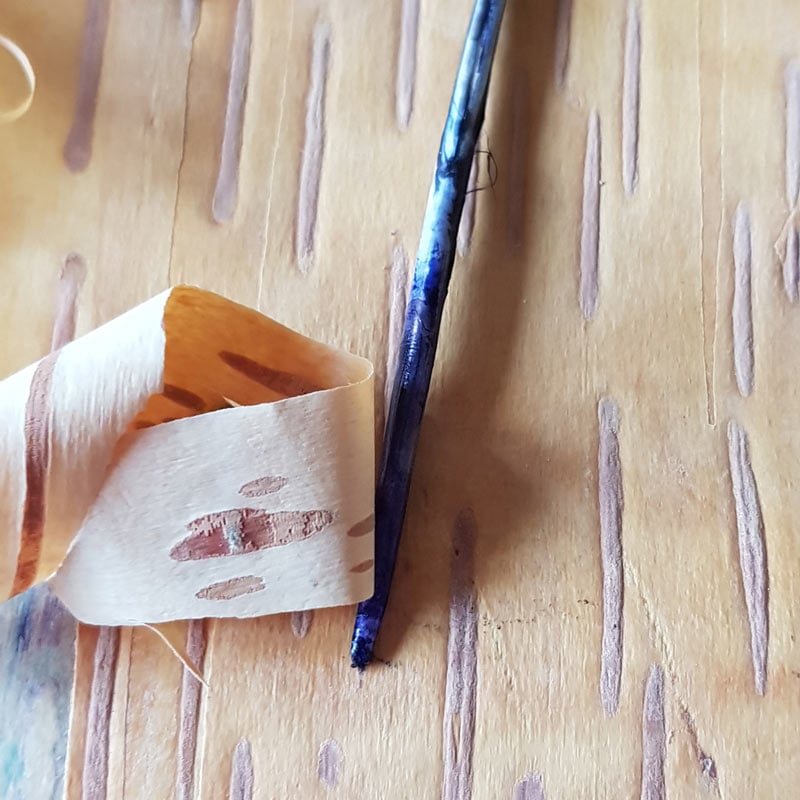
But the silver birch bark was so smoothly grained that it was lovely to write on.
And it took the ink cleanly without much splodging.
We wrote and wrote and drew.
Until we ran out of space.
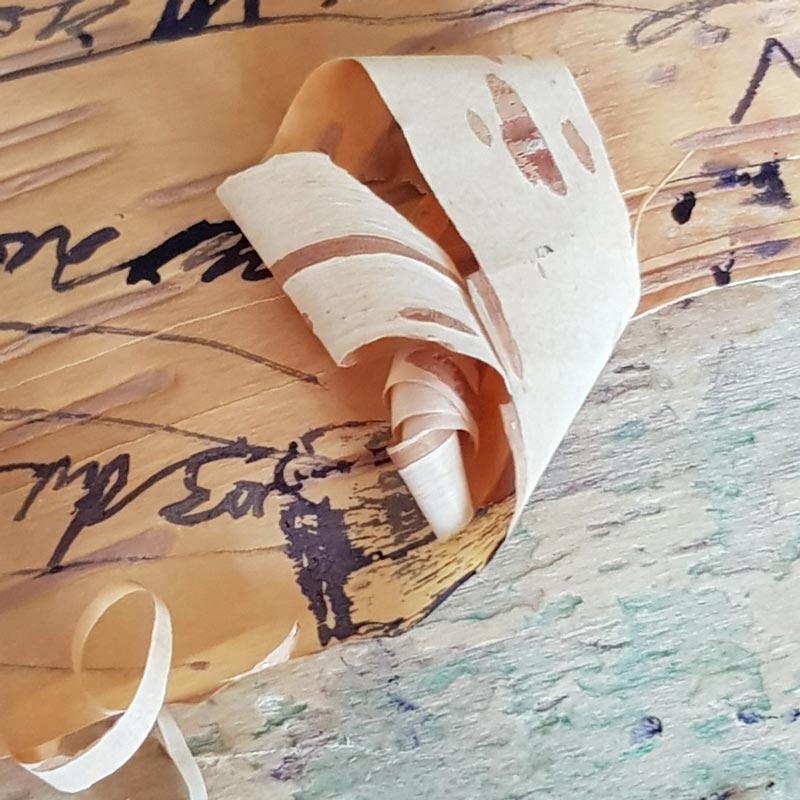
And then wondered again about WHY the silver birch does lose its bark.
And it turns out, it's super clever.
Growing in northern climes, the silver birch has to handle bright sunny days and cold as cold nights.
Typically tree bark expands in the sun and contracts at night.
In the northern woodlands where the silver birch does so well the radical change in temperature would cause constant damage to the bark.
So the white silver birch reflects heat from the sunlight so it doesn't warm up too much.
And has a thin outer layer of bark which it can regularly shed.
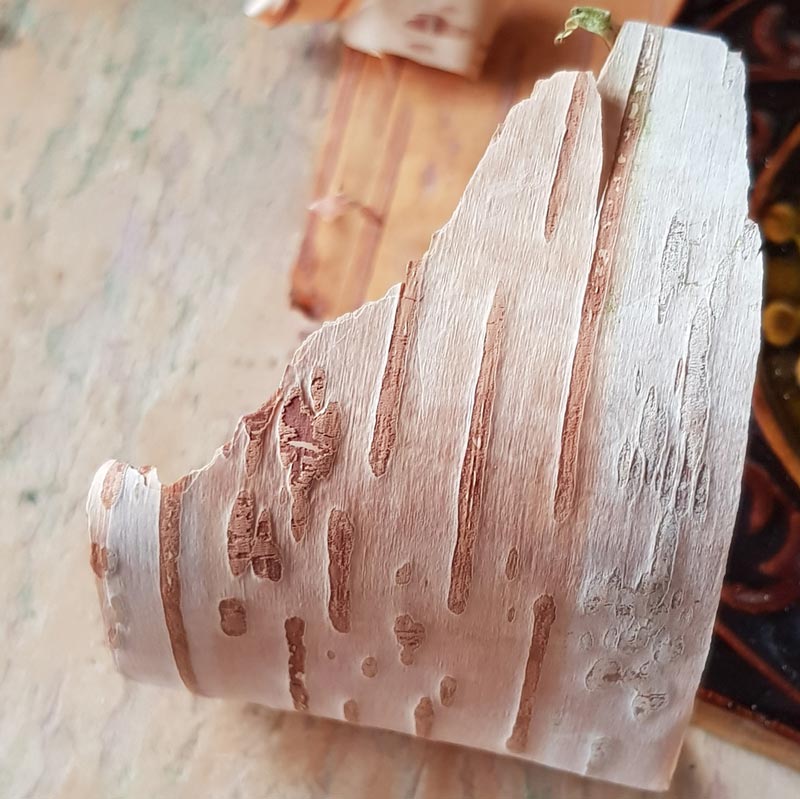
Rather than a thick bark that would crack when temperatures fell.
BUT then the under layer of exposed silver birch bark does something AMAZING!
It actually performs photosynthesis.
So it's NOT just the silver birch tree leaves taking energy from sunlight.
And turning it into food for the tree.
It's ALSO the silver birch bark.
How cool is that?
So next time you're out and about around some silver birch trees give them a hug.
For being soo clever 😉
And look out for fallen bark.
And take some home to create your very own silver birch scrolls.
I do hope you enjoyed this idea.
For more simple ways to enjoy nature with kids, do check out my other nature notes.
And follow my new Facebook page. It's ALL about kids and nature.
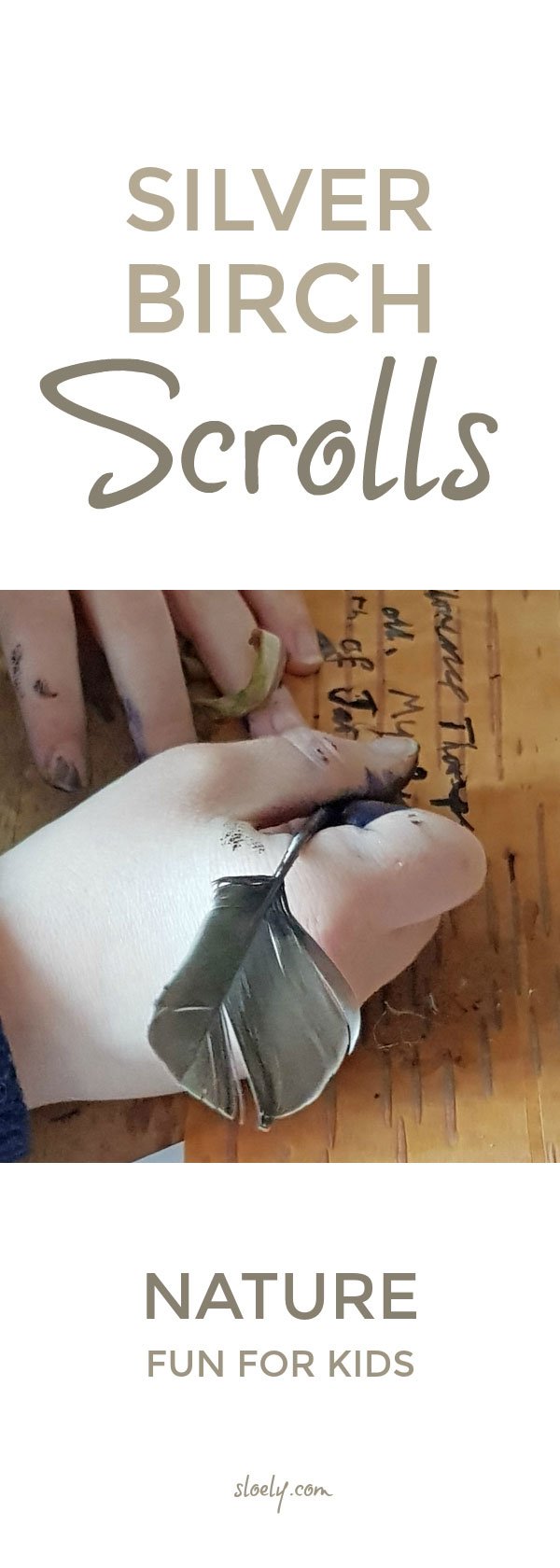
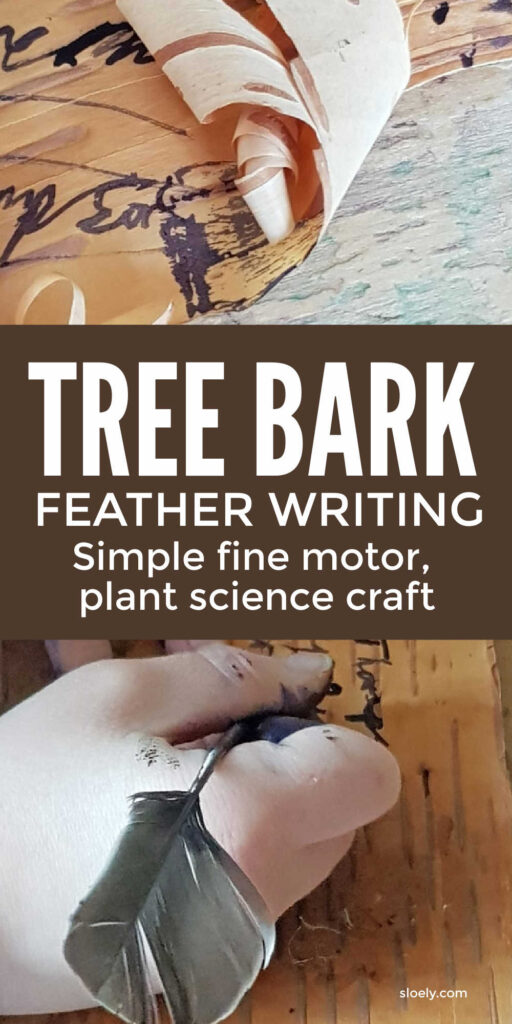





Leave a Reply